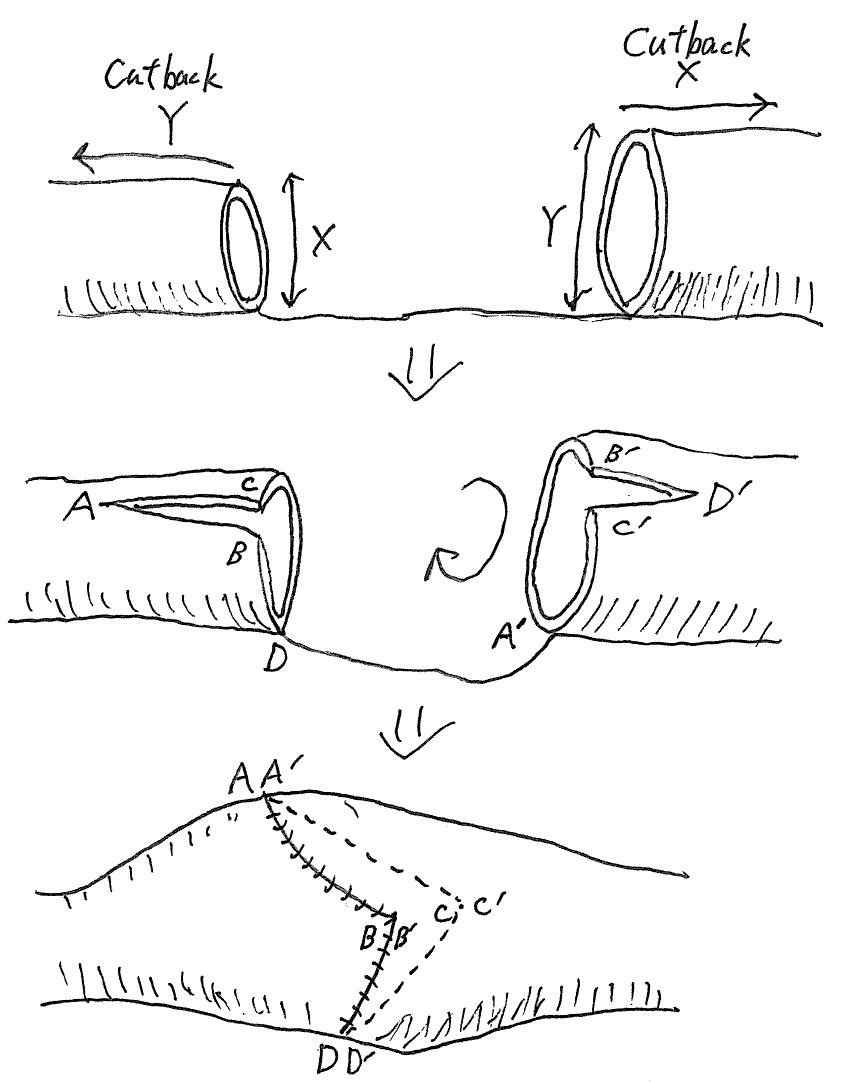|
|
NEW RECONSTRUCTIVE PROCEDURE AFTER INTESTINAL RESECTION FOR CROHN'S DISEASE: ANTIMESENTERIC CUTBACK END-TO-SIDE ISOPERISTALTIC ANASTOMOSIS. Kazuhiro Watanabe*, Munenori Nagao, Tomoya Abe, Shinobu Ohnuma, Hideaki Karasawa, Fuyuhiko Motoi, Takeshi Naitoh, Michiaki Unno Surgery, Tohoku University Graduate School of Medicine, Sendai, Miyagi, Japan
Backgrounds: The surgical management of Crohn’s disease is associated with a risk for postoperative disease recurrence. The site of recurrence typically involves the bowel segment that is immediately proximal or distal to an anastomosis created after intestinal resection. Aims: We performed antimesenteric cutback end-to-side isoperistaltic anastomosis, as a method of reconstruction after intestinal resection for Crohn’s disease (figure). With this procedure, the luminal diameter proximal and distal to the anastomosis became wider than the original diameter of the intestine. The aims of the present study were to assess the safety and mid-term results of this reconstructive procedure. Patients: Between August 2009 and January 2011, we performed this procedure in 12 patients (14 anastomoses) with Crohn’s disease. The median follow-up period from surgery was 62 months. Six patients had a history of previous abdominal surgery for Crohn’s disease (2-8 times). Results: The surgical indications were as follows: intestinal stenosis (n=11), fistula (n=6), abscess (n=1), and perforation (n=1). The sites of anastomosis were as follows: ileo-colon (n=7), ileo-ileo (n=6), ileo-rectum (n=1). There was no intraoperative complication. Early postoperative complications were found in 3 cases (surgical site infection; n=2, paralytic ileus; n=1), which treated conservatively. Nine patients used antibiotics as a postoperative maintenance therapy. The 3- and 5-year endoscopic recurrence rates at the site of anastomosis were 25% and 75%, but endoscopy could pass through the site of anastomoses. There was no patient who required surgery for the anastomotic site, though 2 patients underwent surgery for other lesions. Conclusion: This new reconstructive procedure, which we refer to as the "Antimesenteric end-to-side isoperistaltic anastomosis”, was safe and the mid-term result was acceptable. Although long-term outcome analysis is necessary, this technique may prove to be a reasonable operative option after intestinal resection for symptomatic Crohn’s disease. Back to 2017 Posters |
||||||||||||
© 2026 Society for Surgery of the Alimentary Tract. All Rights Reserved. Read the Privacy Policy.


